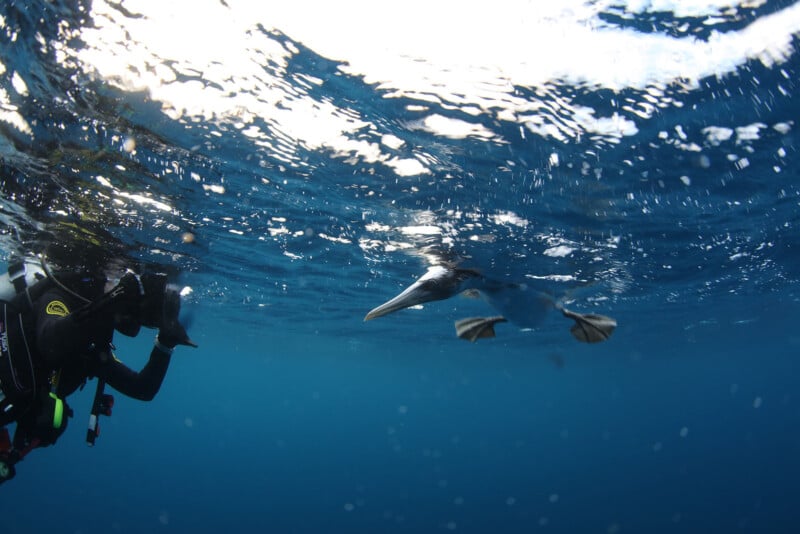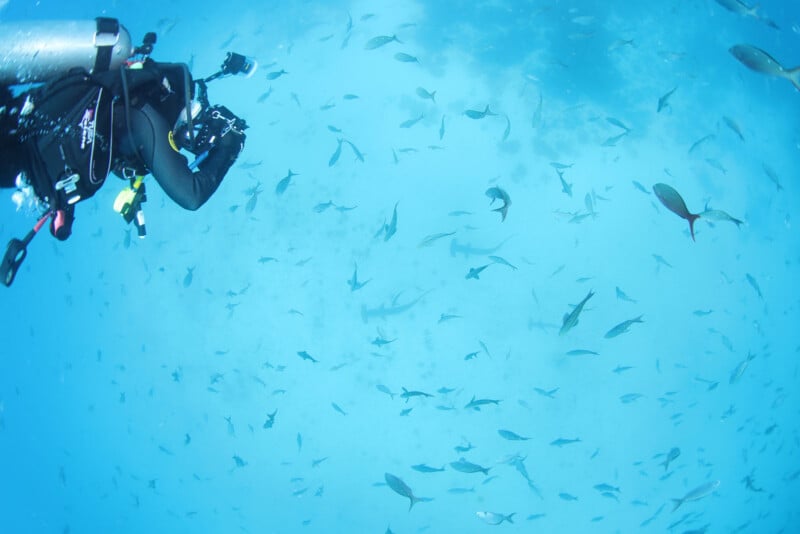
Miami-based photojournalist Alie Skowronski knew there was a hot story in the Galapagos Islands. She threw herself, literally, into producing a scientific article that she successfully presented to The Associated Press on the impact of invasive species and climate change.
Skowronski took photos, shot videos and wrote the story. His trio of skills – photography, videography and writing – illustrates the growing role of press photographers.
More and more photographers are writing news content and shooting videos, and more and more journalists are taking photos and videos.
“The tools of the trade have developed for journalism, storytelling and photography,” says Terry Eiler, who recently turned 80 and has been teaching photojournalism since the 1970s.
“The iPhone has become the default audio, video and photo tool for capturing stories on the move. Laptops, iPads, mirrorless cameras and portable audio-video tools continue to be the professional equipment for quality reporting and storytelling. Traditional journalists must understand audio and visual image creation and editing. Journalists’ notebooks and writing instruments are no longer the only tools in journalists’ pockets.”
Eiler co-founded the School of Visual Communication at Ohio University in 1986 and is now a professor emeritus.

Skowronski graduated from Ohio University in December 2020, winning the prestigious William Randolph Hearst National Collegiate Photojournalism Championship awarded in 2021. Her academic training included photography, audio, and video.
“If I hadn’t taken the video training, I would have felt very unprepared,” Skowronski says.
All of her employers in the media industry required basic knowledge of video filming and production. She joined The Miami Herald as a photojournalist in April 2022.
The Associated Press On July 29, the AP published Skowronski’s article on the climate in the Galapagos Islands. The AP’s World Week in Pictures from July 26 to Aug. 1 included Skowronski’s underwater photo of the Galapagos Islands.
In July, The New York Times published a lengthy article on Loren Long’s bestselling illustrated book, “The Yellow Bus.” It included photos and videos by Cincinnati-based freelance photographer Madeleine Hordinski.
“Most photographers have to shoot video sometimes,” Hordinski says, adding that she also shot video last year for a Washington Post story of an outdoor shooting range north of Cincinnati.
Photojournalists caution against combining stills and video, as some images are more effective as stills. They also point out that the skills of journalists have expanded as news media have downsized.
News media management has evolved as the role of photographers has expanded. Visual journalists are more involved in brainstorming, planning and presenting stories.
Independent, non-profit newsroom ProPublica exemplifies this trend by hiring veteran photographer Boyzell Hosey in 2022 as its visual storytelling editor.
Hosey recalls a time early in his career when some photographers didn’t write captions for their photos because that detail was handled by editors. For photographers to have “a seat at the table” in newsroom management, they need to have skills beyond point-and-click photography, he says.
Gannett Property Columbus’s Dispatch has asked photojournalist Barbara J. Perenic to expand her role by working more closely with editors and reporters to develop and pitch stories. Perenic describes herself on LinkedIn as a “visual storyteller and idea piñata.”
His article on robotic lawn mowers, published by The dispatch September 2, Featured Video.
Perenic’s husband, sports journalist David Jablonski, has been making videos since 2007.
“That’s when we first had the ability Springfield News-Sun “We were able to put our own videos on the site. Journalists were given little cameras. I liked it right away,” Jablonski says. “It gave me a reason to be on the sidelines, rather than in the press box.”
Cox First Media, which owns newspapers in Springfield, Dayton and neighboring Butler County, values video and photos from reporters, Jablonski said. He’s now a field reporter at the Cox-owned Dayton Daily News, covering the University of Dayton Flyers, among others.
Jablonski bought a high-end Canon digital camera in 2012. Who taught him how to take pictures?
“I learned the basics from my wife,” he recalls, “but I mostly learned by trial and error.”
His intensive course included photographing nearly 70 Cincinnati Reds games in 2013 under various lighting conditions.
“It caught up with me very quickly,” says the pioneering writer/photographer/videographer.
About the author: Ken Klein lives in Silver Spring, Maryland. He is retired from a career in politics, lobbying and media, including stints with the Associated Press and Gannett in Florida. Klein is an alumnus of Ohio University and a member of the Dean’s Advisory Board for the Scripps College of Communication. Professionally, he has worked for the Fort Myers News-Press (Gannett), the Associated Press (Tallahassee), Senator Bob Graham and the Outdoor Advertising Association of America (OAAA).
#News #photographers #longer #photographers